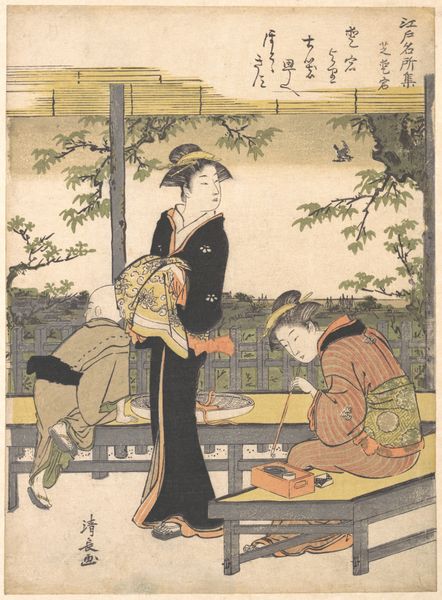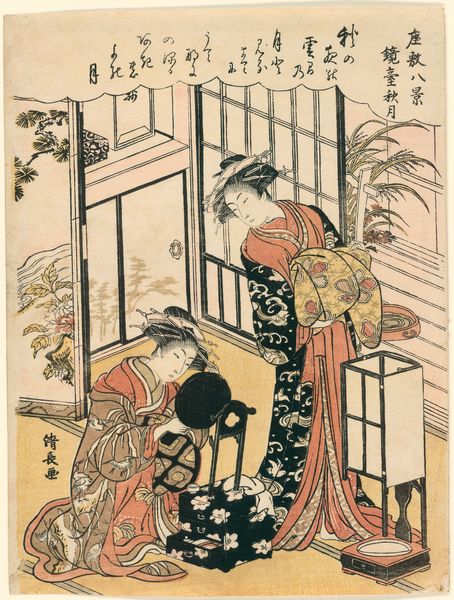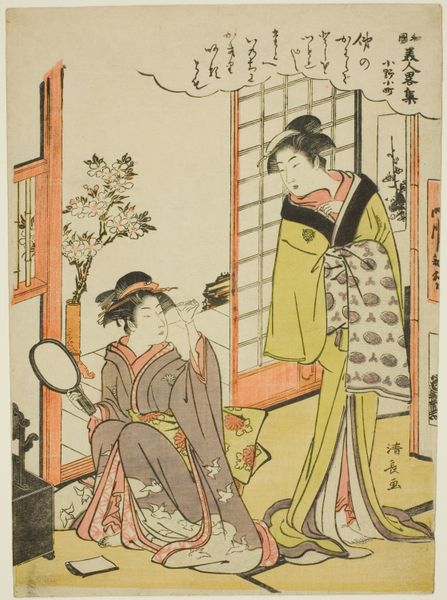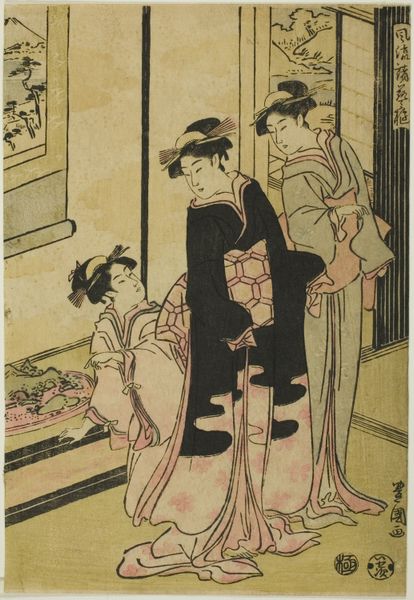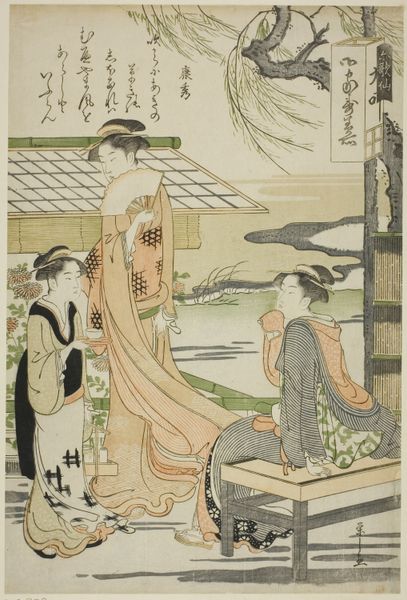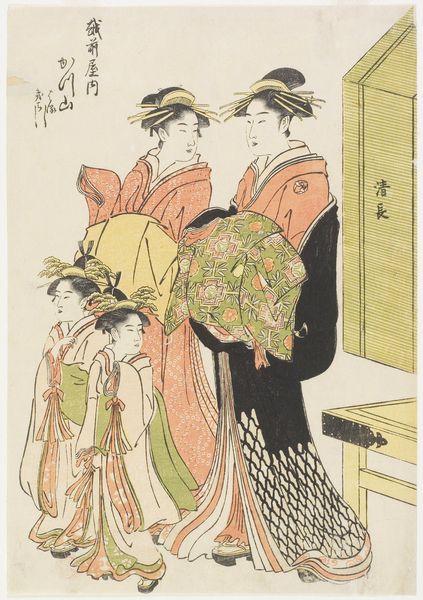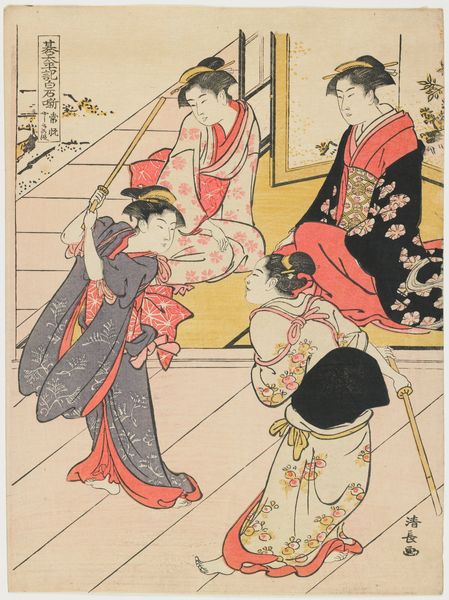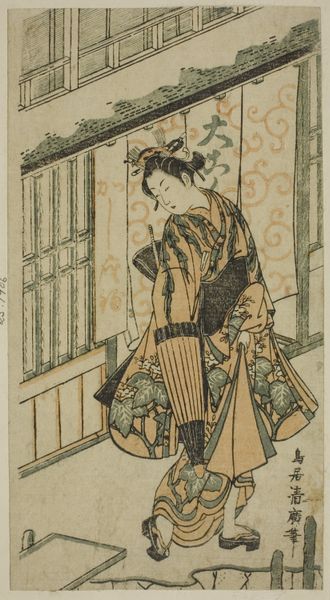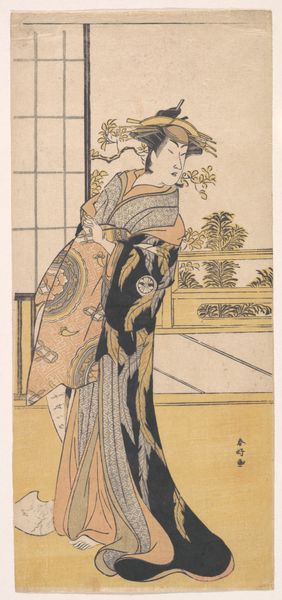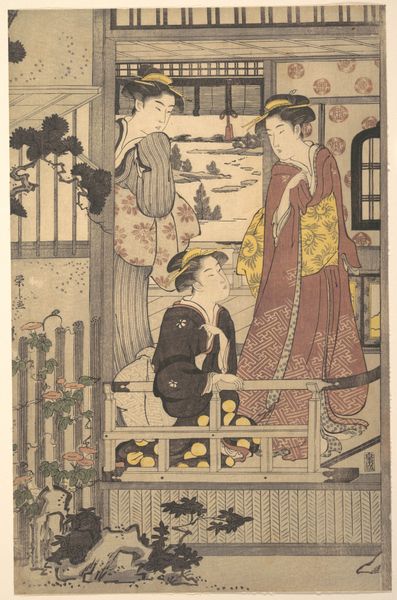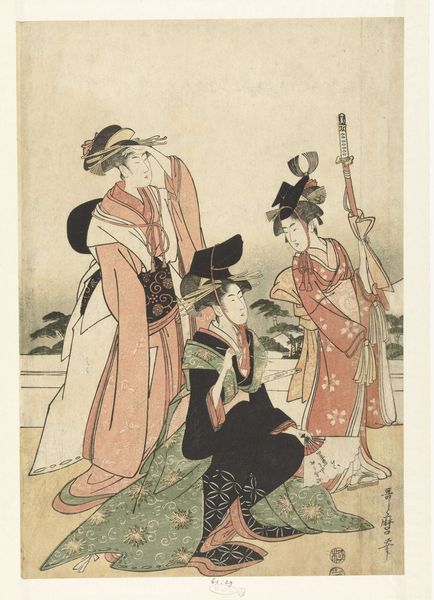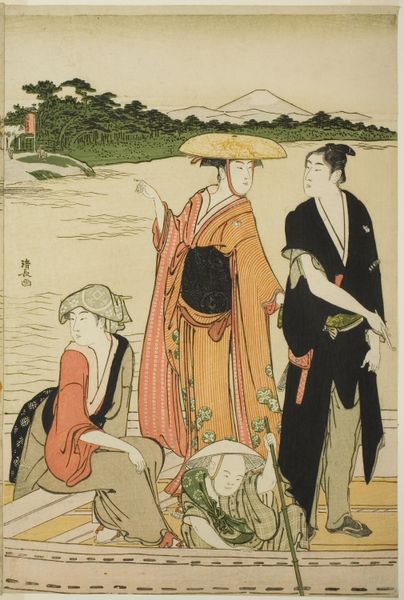
Night Rain of the Tea Stand, from the series "Eight Scenes of the Parlor (Zashiki hakkei)" c. 1777
0:00
0:00
print, woodblock-print
# print
#
asian-art
#
ukiyo-e
#
woodblock-print
#
genre-painting
Dimensions: 26.1 × 19.7 cm
Copyright: Public Domain
Curator: Right, so let's delve into Torii Kiyonaga’s captivating woodblock print, “Night Rain of the Tea Stand," part of his "Eight Scenes of the Parlor" series from around 1777. You can find it here at the Art Institute of Chicago. Editor: Mmm, a gentle, almost secretive mood washes over me looking at this. It feels like a peek into an intimate world—soft colors, subdued action. What do you make of it? Curator: It beautifully captures a sense of quiet domesticity and feminine beauty. Kiyonaga was a master of portraying idealized female figures during the Edo period. This scene focuses on two women, likely courtesans, within the confines of their living quarters. Editor: Courtesans, huh? See, that layers another level into it. Not just domestic, but performed domesticity, maybe? Their exquisite kimonos feel significant, too, symbols of their position...almost like constrained beauty. The woman kneeling – it almost feels ritualistic. Curator: Precisely. The detailed depiction of the tea ceremony utensils does imply a sense of ritual. Kiyonaga gives us glimpses of a cultural moment as well as of feminine roles in society. Notice the careful arrangement of the space around them; there's that beautiful harmony with nature just visible through the doorway. The composition's all gentle angles and serene light. Editor: Yes! And even that rain—which we barely see—you can sense it creating an atmosphere of seclusion and calm. This piece strikes a perfect balance; the elegance feels natural, unforced, but I wonder what it conceals under all the gentility. Curator: I think it makes you think. It prompts us to consider what’s shown but also what isn’t: social hierarchies, expectations. It presents a curated reality and yet manages to feel genuinely touching. Editor: Absolutely, and perhaps that’s what makes Kiyonaga's work so enduringly relevant – the beauty, yes, but the silent questions it subtly provokes as well. It makes you want to know their names. Curator: Indeed. The allure of glimpsing an instant frozen in time. I keep returning to this space created around them. Editor: Agreed. Well, a potent and, perhaps, provocative pause in the bustle of everyday existence.
Comments
No comments
Be the first to comment and join the conversation on the ultimate creative platform.
